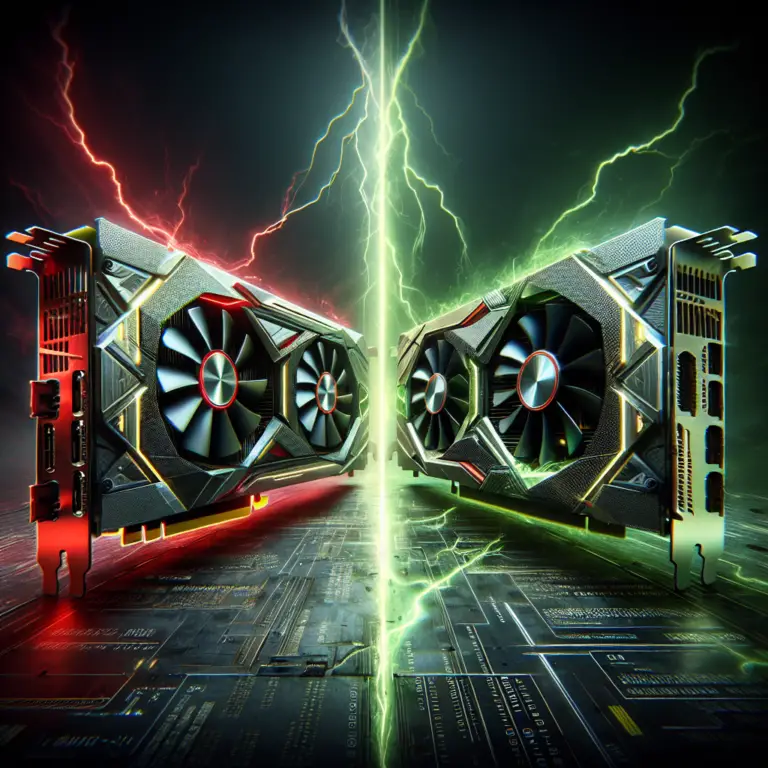AMD Radeon RX 7900 XT Overview
Launched in November 2022, the AMD Radeon RX 7900 XT initially came with a hefty MSRP of $899. However, subsequent price drops have made this high-end gaming card more accessible, now sitting at an attractive $750. This card boasts a powerful RDNA 3 GPU with 84 Compute Units and 5,376 shaders, which in certain scenarios can process two instructions simultaneously, effectively doubling the shader count.
The RX 7900 XT is equipped with a generous 20GB of GDDR6 VRAM, an 80MB Infinity Cache, and 192 ROPs, making it an ideal candidate for 4K gaming. However, it’s worth noting that the card’s maximum power limit of 315W is on the higher side, which may necessitate an upgrade to your PSU (power supply unit) if you’re coming from a less power-hungry setup.
(Image credit: Remedy)
Nvidia RTX 4070 Ti Overview
The Nvidia RTX 4070 Ti is a formidable contender in the high-end graphics card market, particularly for those targeting 1440p gaming. While it may not outperform the RX 7900 XT in 4K gaming, it shines with its full support for DLSS 3.5 technology, which includes AI-processed upscaling, frame generation, and ray tracing denoising. This suite of features allows the 4070 Ti to deliver excellent performance even at higher resolutions.
Another significant advantage of the RTX 4070 Ti is its power efficiency. With a peak power consumption of 285W, it’s about 10% more efficient than its AMD counterpart. This efficiency doesn’t just mean lower energy bills; it also translates to less heat output, which can be a critical factor in maintaining a cool and quiet gaming rig.
Comparative Analysis
When it comes to choosing between the Nvidia RTX 4070 Ti and the AMD Radeon RX 7900 XT, gamers and professionals alike must weigh the pros and cons of each card’s offerings. Below is a comparative analysis of their key specifications:
| Specification | Nvidia RTX 4070 Ti | AMD Radeon RX 7900 XT |
|---|---|---|
| Compute Units / Shaders | 7,680 | 5,376 (10,752 effective in certain scenarios) |
| Memory | 12GB GDDR6X | 20GB GDDR6 |
| Power Consumption | 285W | 315W |
| Ray Tracing | Superior performance and features | Capable but not as advanced |
| Upscaling Technology | DLSS 3.5 | FSR 3 |
In terms of gaming performance, the RX 7900 XT offers more raw power with its higher shader count and VRAM, making it a strong choice for 4K gaming. However, the RTX 4070 Ti’s superior ray tracing capabilities and DLSS 3.5 technology provide it with an edge in games that support these features, delivering smoother and more visually stunning gameplay.
Power consumption is another critical factor, with the RTX 4070 Ti being the more power-efficient option. This efficiency can lead to a cooler system, which is especially beneficial for those with compact PC builds or limited cooling options.
For content creators and those interested in AI applications, the RTX 4070 Ti’s compatibility with a wide range of software and technologies gives it a distinct advantage. Nvidia’s ecosystem, including support for applications like Blender and AI frameworks, makes it a versatile choice beyond gaming.
The discounted price of both cards to $749.99 makes them more competitive than ever. While the RTX 4070 Ti’s price cut doesn’t make it a steal, it does align its value more closely with its capabilities. Ultimately, the choice comes down to whether you prioritize raw gaming power or a balance of gaming performance and additional features.












